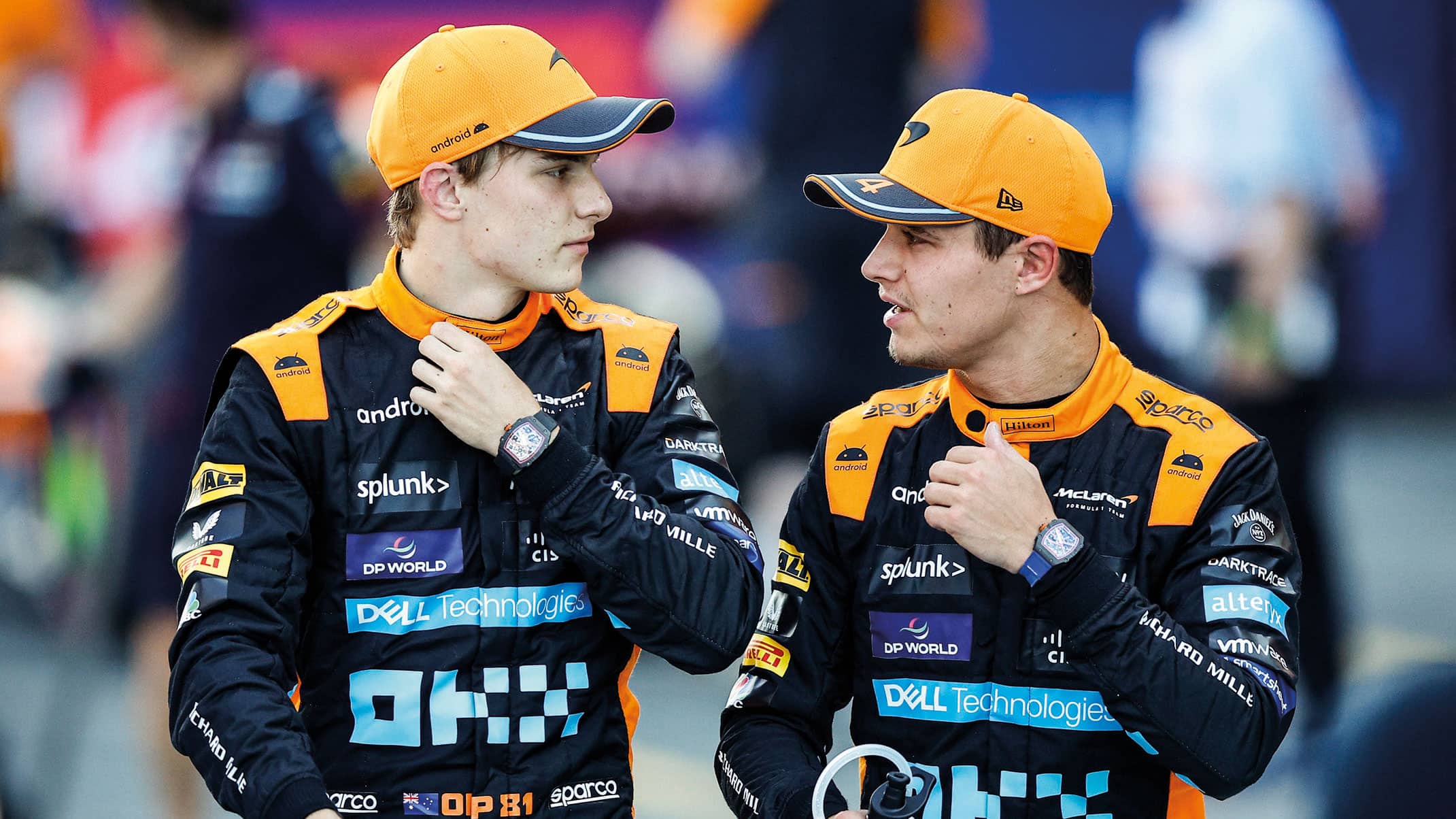F1’s team-mate rivalries: the enemy within
It’s a cliché but apt... Your team-mate is the first rival you must beat in Formula 1. Careers can turn based on succeeding against the driver on the other side of the garage. As we head into 2024 Edd Straw runs through the tantalising intra-team match-ups on the F1 grid
Getty Images
Lando Norris vs Oscar Piastri
Lando Norris had it all his own way at McLaren prior to Oscar Piastri’s arrival at the start of 2023. But the Australian’s pace and ice-cool mentality has changed the dynamic. Norris remains on top thanks to being the more consistent of the two, particularly when it comes to delivering prodigious pace in races where tyre management is a challenge, but Piastri will take a bigger step forward in 2024 given it is only his second season.
Both have long-term deals, Norris to the end of ’25 and Piastri ’26, meaning the battle between a McLaren pairing Max Verstappen recently described as “the best driver line-up out of all of them” has plenty of time to play out. Opinions differ on which has the greater ultimate potential – a tantalising prospect for McLaren given both are so highly rated. Whoever emerges on top will not only spearhead a team that is looking increasingly threatening at the front in F1, but also establish themselves as a champion-in-waiting.
Team principal Andrea Stella speaks highly of the “self-awareness” of 22-year-old Piastri in realising that talent alone is not enough. That relentless push to improve is a key characteristic of a great driver and Piastri is consistent in eschewing excuses and drilling down into understanding not just how to sharpen his own game but also unpick his technique if it’s not working. He’s applied that to the tyre management troubles that have often led to him lagging behind Norris.
In Norris’s case, Stella seeks refinement in knowing when to take a conservative approach rather than going for broke. As he puts it, “with Lando, if anything we need to learn how to do a 98% or 99% lap. When it’s about going for 100% we are in good hands.”
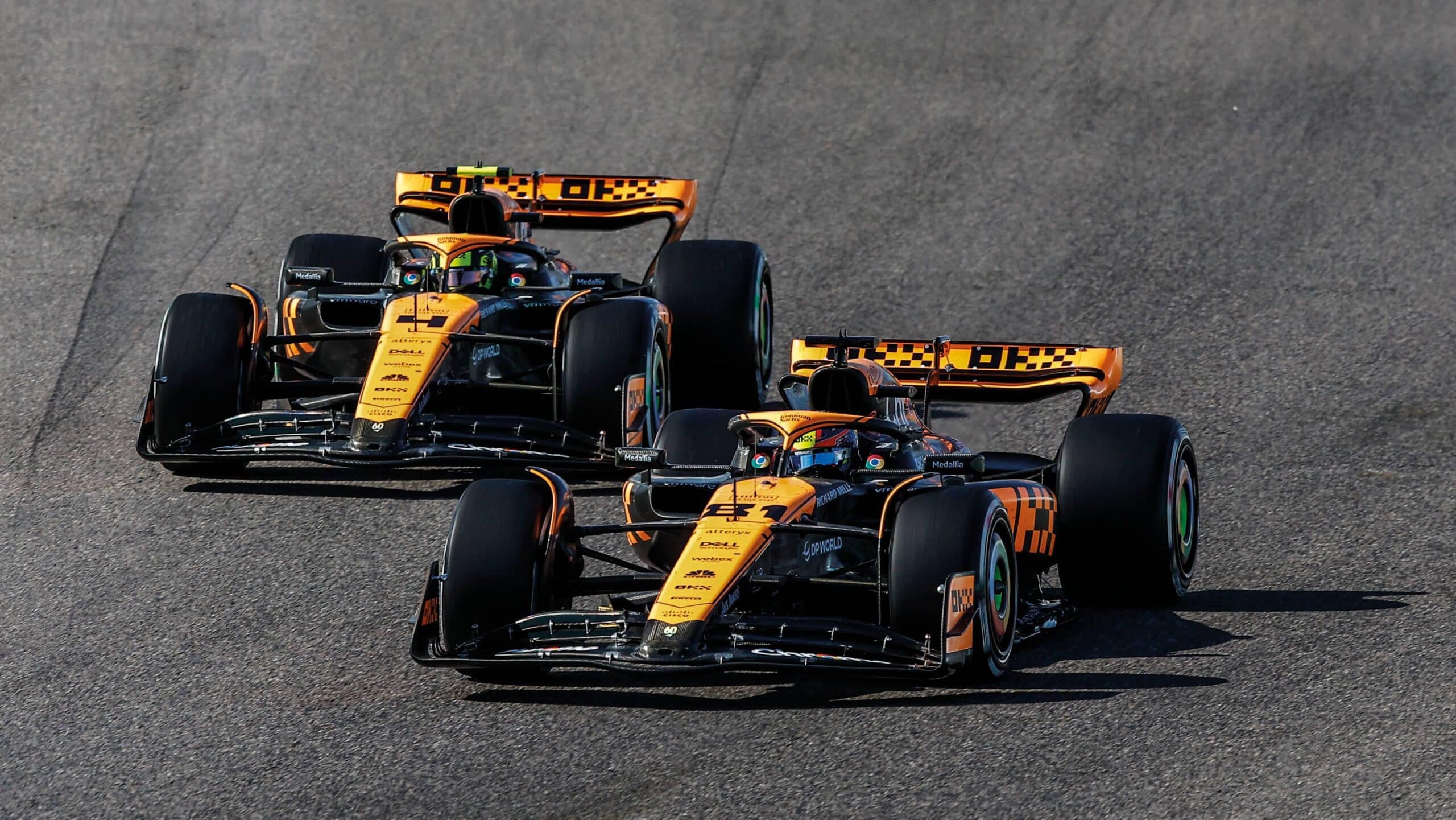
McLaren’s results improved as 2023 progressed, with podiums for Oscar Piastri, leading, and Lando Norris. Opposite: the pair at Suzuka in September, where McLaren took a creditable 2-3
DPPI
There’s a fascinating contrast between the pair. Technique-wise, Piastri favours the classic ‘v-shaping’ of the corner with later braking, faster initial rotation and a shorter turn. That’s a style that is needed to get the best out of recent McLarens, one that Norris has adopted despite, by inclination, preferring to ‘u’ the corners, carrying the speed through a slightly longer turn.
Then there is their differing personalities. Piastri is more serene in the cockpit. Norris is more prone to sounding stressed over the radio and gives himself a hard time for errors, although that never translates into a negative spiral. The cocktail means the garage could prove a combustible place if McLaren re-emerges as a title challenger.
Lewis Hamilton vs George Russell
What was once a master-and-apprentice combination at Mercedes has evolved. When George Russell was drafted in for 2022 after three impressive preparatory campaigns with Williams, it was regarded as the start of a handover period and that should he prove worthy would leave him picking up Lewis Hamilton’s mantle as the team’s main man. Hamilton’s new two-year deal to stay on until the end of ’25 has changed this into a more immediate battle for supremacy.
As Mercedes has struggled these past two years, the competition between the duo has only simmered in the background. There have been minor flashpoints such as the collision at the start in Qatar and the odd team orders gripe, but they’ve largely presented a united front. Despite that, a pattern has emerged in that every time Russell feels he’s getting an edge, Hamilton reasserts himself.
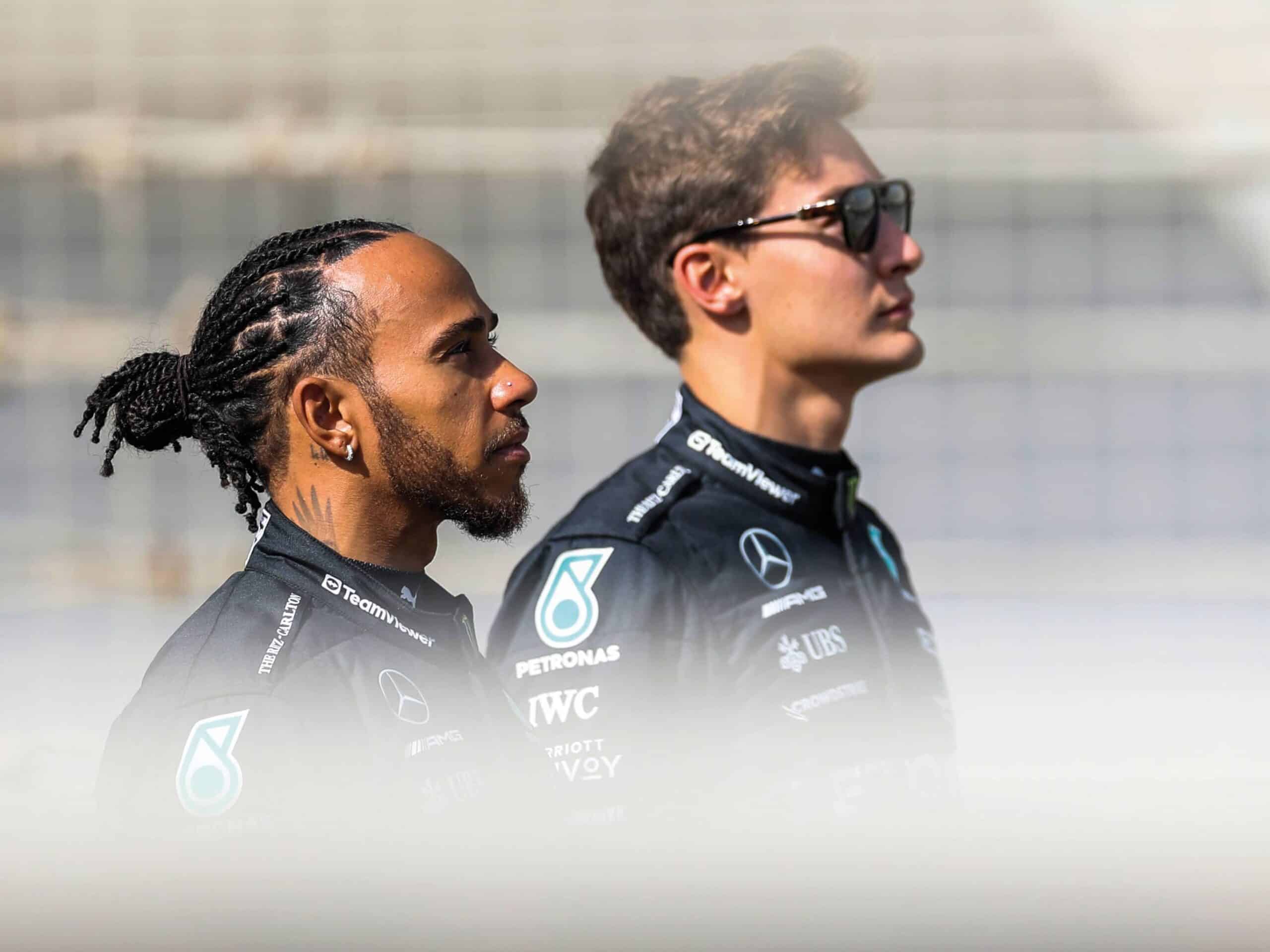
The master and one-time apprentice, but for now Lewis Hamilton has the edge over George Russell.
That was certainly the case in ’22 when Russell initially felt he had Hamilton well covered but was then surprised by what happened as the car improved. As a trend, when Hamilton has had confidence in the rear end of the Mercedes, he’s had the edge.
Russell describes this season as “in terms of pure performance my best ever”. He’s also admitted to making mistakes and expressed frustration at a dive in the good conversion rate of opportunity into results achieved in his first year with Mercedes, to the point where “it feels like 50% of the races, we’ve been far from maximising the points”.
Hamilton remains a formidable competitor. He turns 39 in January but referred to “unfinished business” when he inked the new deal. On current form, there’s no sign of any significant drop-off with age.

The Mercedes duo collide on lap one in Qatar
Getty Images
The key question is what happens if both Russell and Hamilton are in a title fight? While the pair don’t have the long history that underpinned the Hamilton/Nico Rosberg fight, Hamilton will be wary of Russell. The younger driver is a would-be usurper, a ruthless operator who won’t be afraid to push the boundaries should such a battle arise. He’s fast enough to make a fight of it and only getting better with experience.
What we don’t yet know is if Russell at his best is as quick as a peak Hamilton. The team suspects the answer to that is probably yes, but Russell also needs to match his team-mate’s knack for tyre management over race stints.
Until Mercedes produces a car with title potential, this duel will remain subdued.
Charles Leclerc vs Carlos Sainz
Ferrari has the most complementary driver pairing in F1 in Charles Leclerc, arguably F1’s fastest driver, and Carlos Sainz, perhaps its most intelligent. Those are reductive epithets, but they capture the underlying dynamic well.
There has been a push and pull throughout their three seasons together, but there have been spells when Leclerc appears to have taken the initiative for good given he’s not just a one-lap throttle-jockey, but a driver capable of delivering strong race performances across a wide range of conditions. However, Sainz usually reels him back in and even when behind, lurks only a few tenths off.
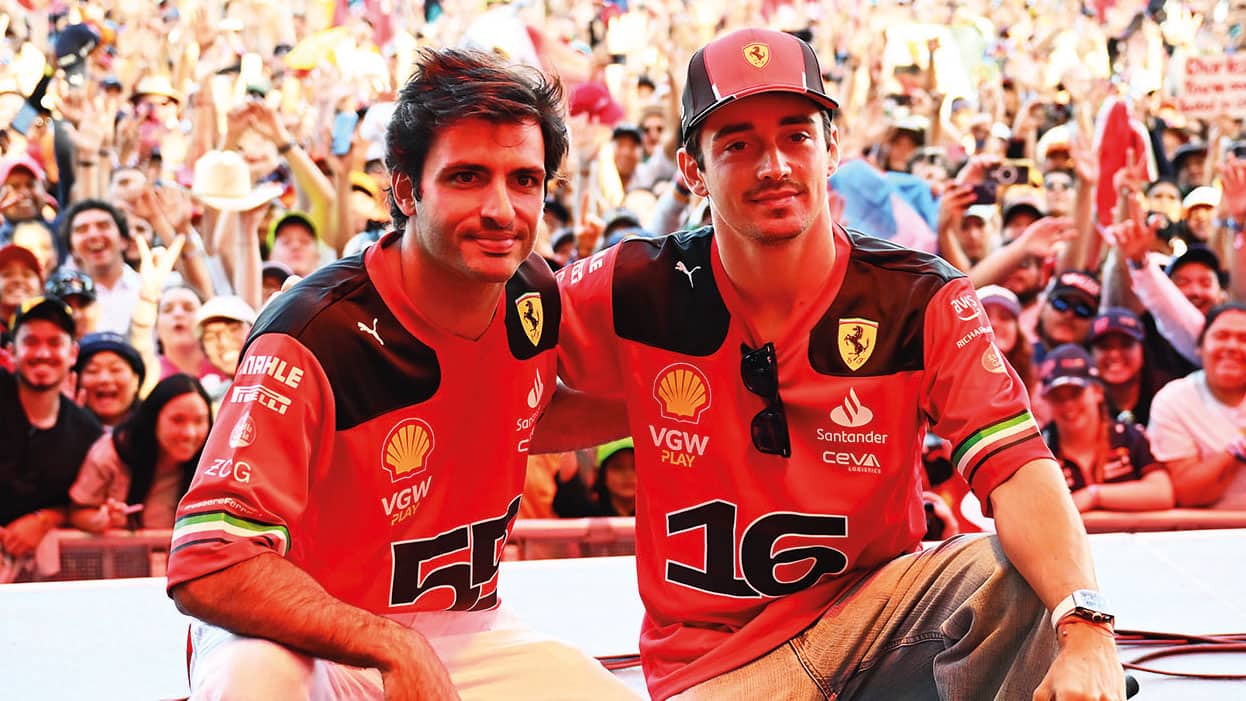
rumours circulated in summer about friction in the Ferrari camp – which Leclerc denied
Getty Images
Both drivers are out of contract at the end of ’24 and see themselves as potential Ferrari spearheads. Leclerc is the anointed one – and for good reason – but Sainz has never accepted his unstated number two status.
Often the battle between the pair swings with the car characteristics. When Leclerc can set up the car with a little oversteer, he leaves Sainz in his dust. There were times in ’23 when Leclerc couldn’t do that because the car was simply too unstable and oversteer was uncontrollable. That’s when Sainz, who likes a little reassuring understeer and is very quick with that balance, was in the ascendancy.
Leclerc is adaptable and has such a sublime talent shaped by years of hard work that means he makes changes to his driving almost subconsciously. When the ground-effect regulations were introduced last year, Leclerc almost immediately was onto the technique changes, in particular in the braking phase, that were needed to make the cars work. By his own admission, Sainz wasn’t and the result was a season when he was clearly the inferior Ferrari driver.
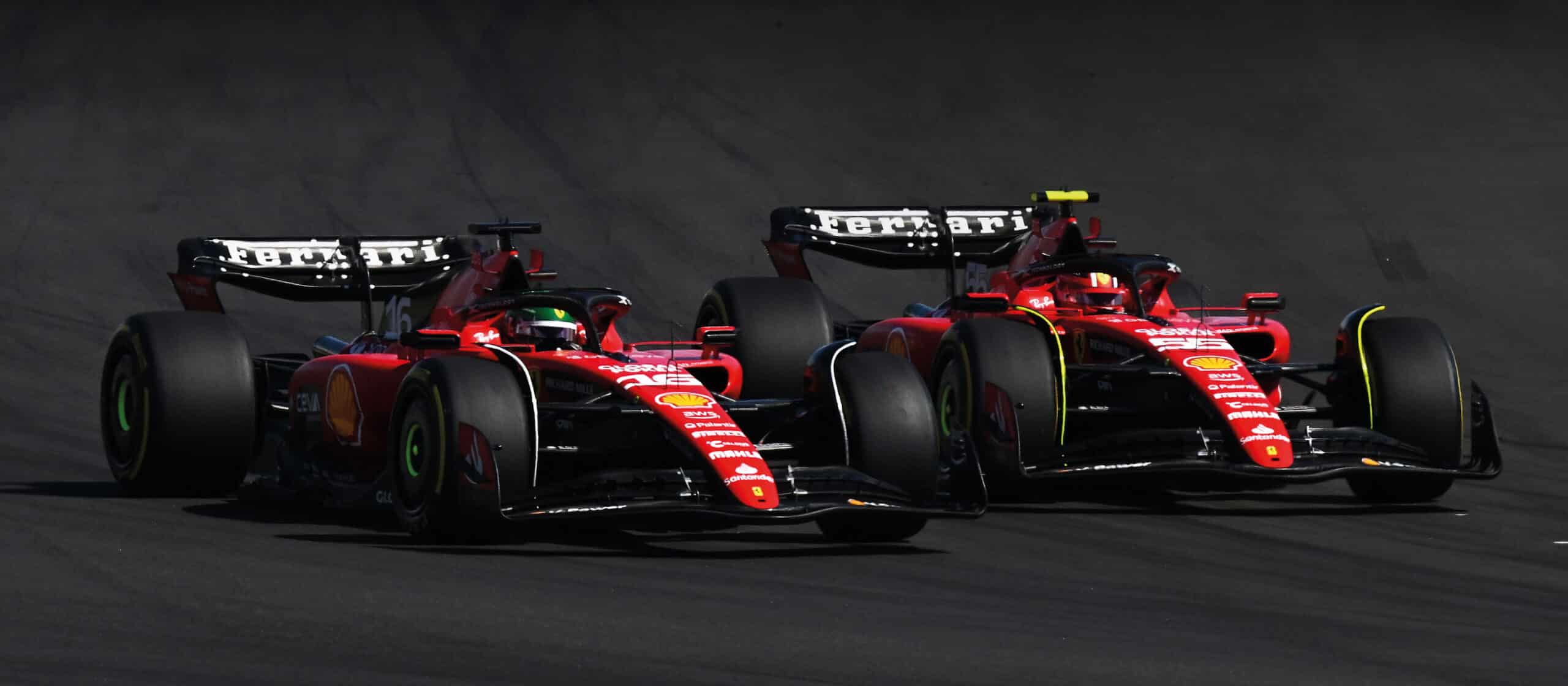
Charles Leclerc, left, has had his fair share of poles in 2023 but Carlos Sainz has the superior points haul.
Getty Images
But ’23 was different, more akin to what happened in ’21. He had a run of three weekends after the August break where he was arguably the best driver on the grid –across Zandvoort, where the car was dismal but he somehow finished fifth, then Monza, third, and Singapore, winning from pole. Then, Leclerc edged ahead again.
Ferrari needs to keep hold of both given the strength of the line-up.
Yuki Tsunoda vs Daniel Ricciardo
Regarded by many as having a foot in the door at Red Bull as Sergio Pérez’s replacement, Daniel Riccardo faces an obstacle in AlphaTauri team-mate Yuki Tsunoda.
Tsunoda is, at best, a long shot for promotion to Red Bull but if he can outperform Ricciardo he could act almost as a blocker. As former team-mate Pierre Gasly warns, Tsunoda is “faster than people give him credit for”.
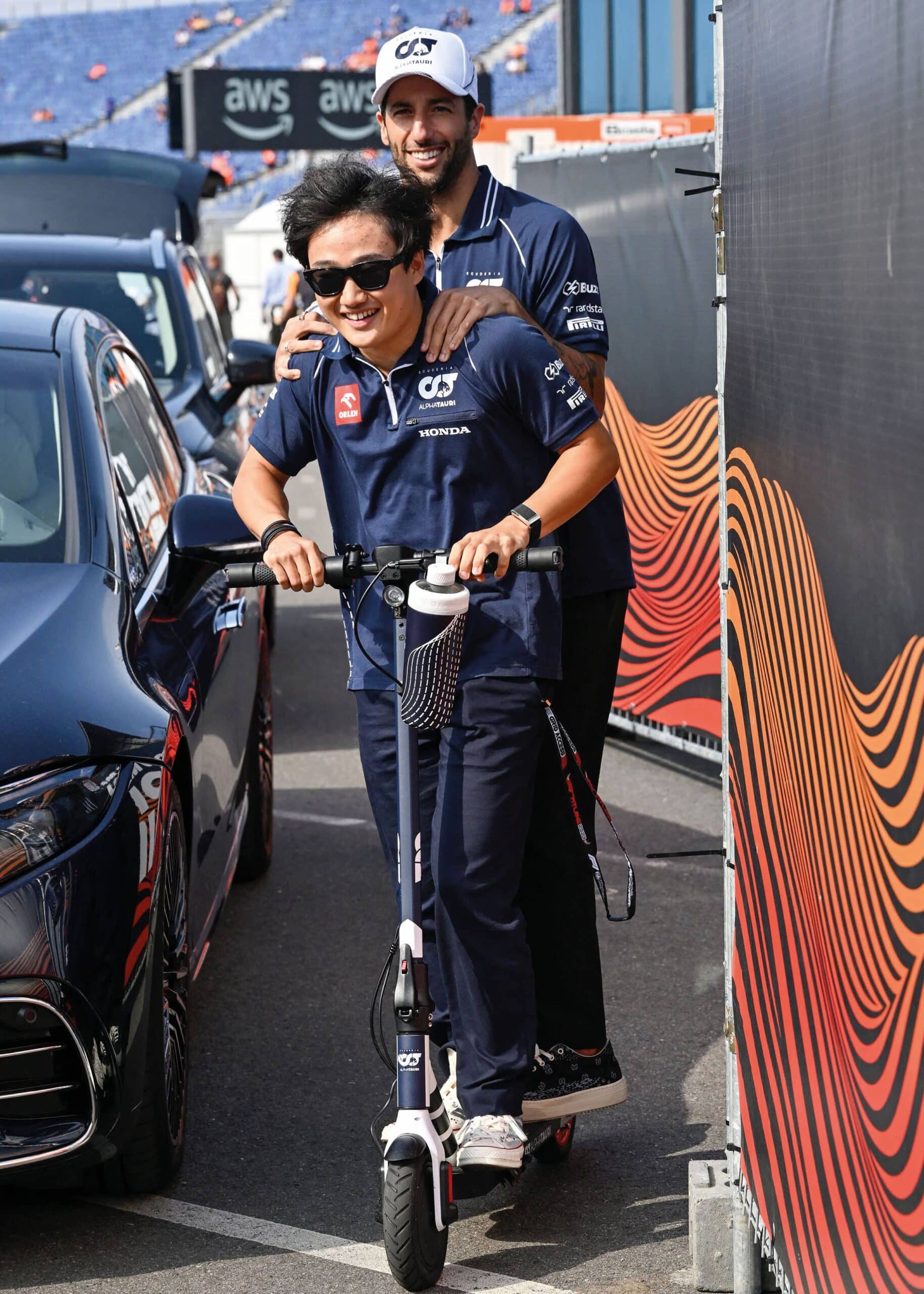
Can Yuki Tsunoda or Daniel Ricciardo make the grade for Red Bull’s senior team?
Based on the limited comparisons of ’23, interrupted by Ricciardo missing five races with a hand injury, there’s no clear winner so far. What Ricciardo’s presence has underlined to Tsunoda is the need to make improvements in terms of ‘emotion control’ given his tendency to get carried away in the cockpit and make rash decisions. He’s also recognised Ricciardo’s very different driving style – braking earlier with a more controlled turn in and more mid-corner rotation compared to Tsunoda’s late-braking approach – offers some techniques that can be used to broaden his own driving toolkit in terms of brake application and release.

Lower mid-table team-mates at the Mexico Grand Prix
Grand Prix Photo
If Ricciardo outperforms Tsunoda, the pathway to Red Bull is clear. Perhaps that promotion will come well before ’25, despite Pérez being under contract for another year. What he has proven is that his McLaren struggles, which were particularly pronounced in ’22, were more team specific than related to the generic characteristics of this generation of cars. That, combined with his commercial appeal, popularity and history with Red Bull, puts him in a strong position.
Provided, of course, he can beat the underrated, if excitable, Tsunoda.
Pierre Gasly vs Esteban Ocon
Pierre Gasly and Esteban Ocon have a long and turbulent history. Despite Alpine desperately trying to present them as the best of friends, they aren’t – as Gasly has recently confirmed in reference to the measures that have to be taken to prevent their partnership turning ‘nasty”’. So far, it’s gone well – Australia collision aside.
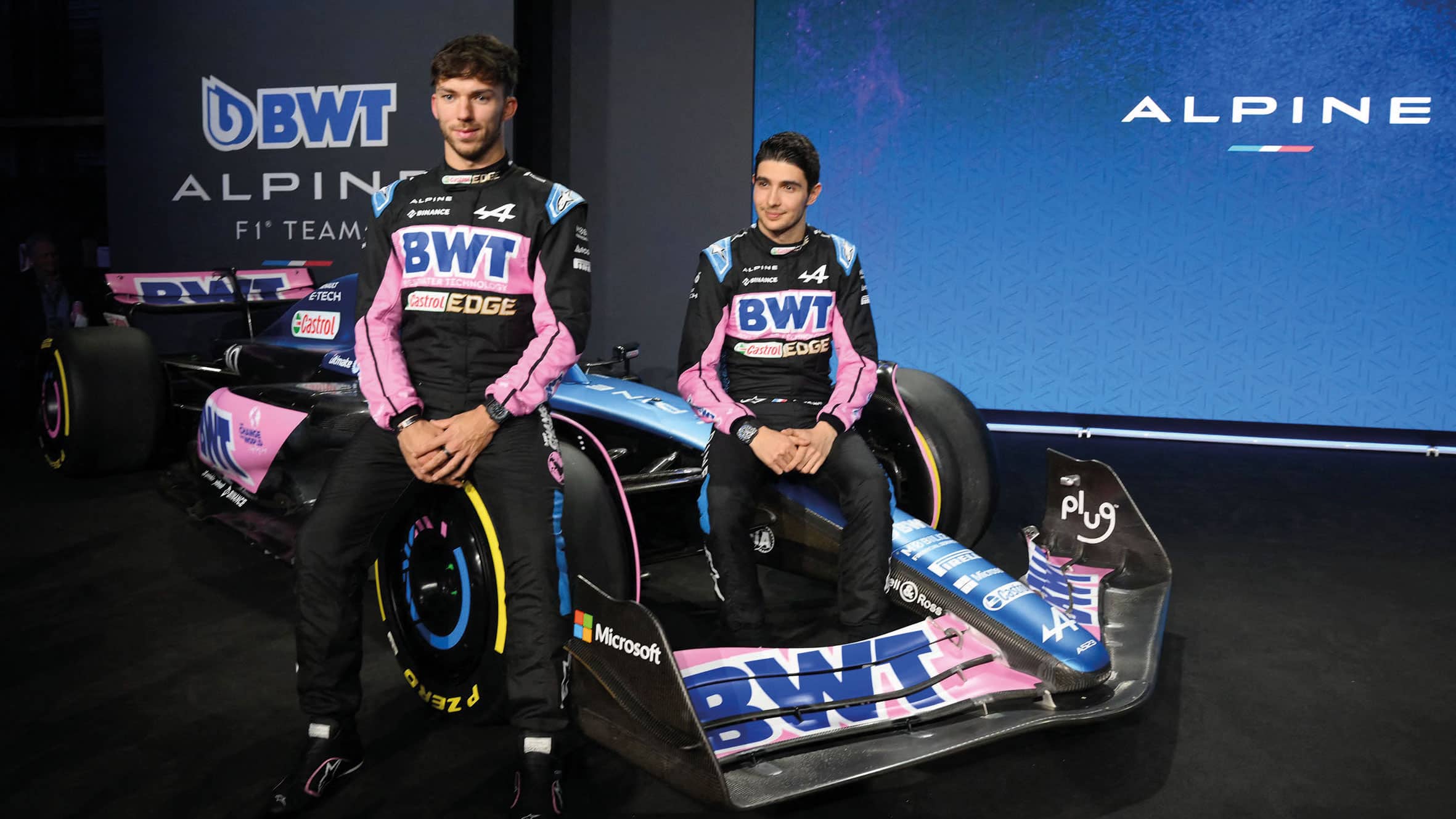
There’s a distance between Alpine’s drivers.
Few regard Gasly and Ocon as topliners in the Verstappen/Hamilton sense. Instead, they are seen as decent, if erratic, performers who are capable of great things on their day. That was borne out in 2023, with both taking podium finishes. But while they are different characters, they are also very different drivers. Ocon is usually characterised as a smooth driver, although his contention is that this is the result of extreme sensitivity allowing him to deploy imperceptible corrections earlier than his rivals. That requires a car that gives him the feedback to do so. There’s no question that, at his best, he’s outstanding – the doubt is about whether that happens frequently enough.
As for Gasly, he has a very particular set of demands. He craves a car that turns in sharply but with a rear end that is predictable. Give him that and his late-braking, attacking style can yield great pace and laps of breathtaking commitment. Give him a car that lacks those characteristics and he can find life more difficult.
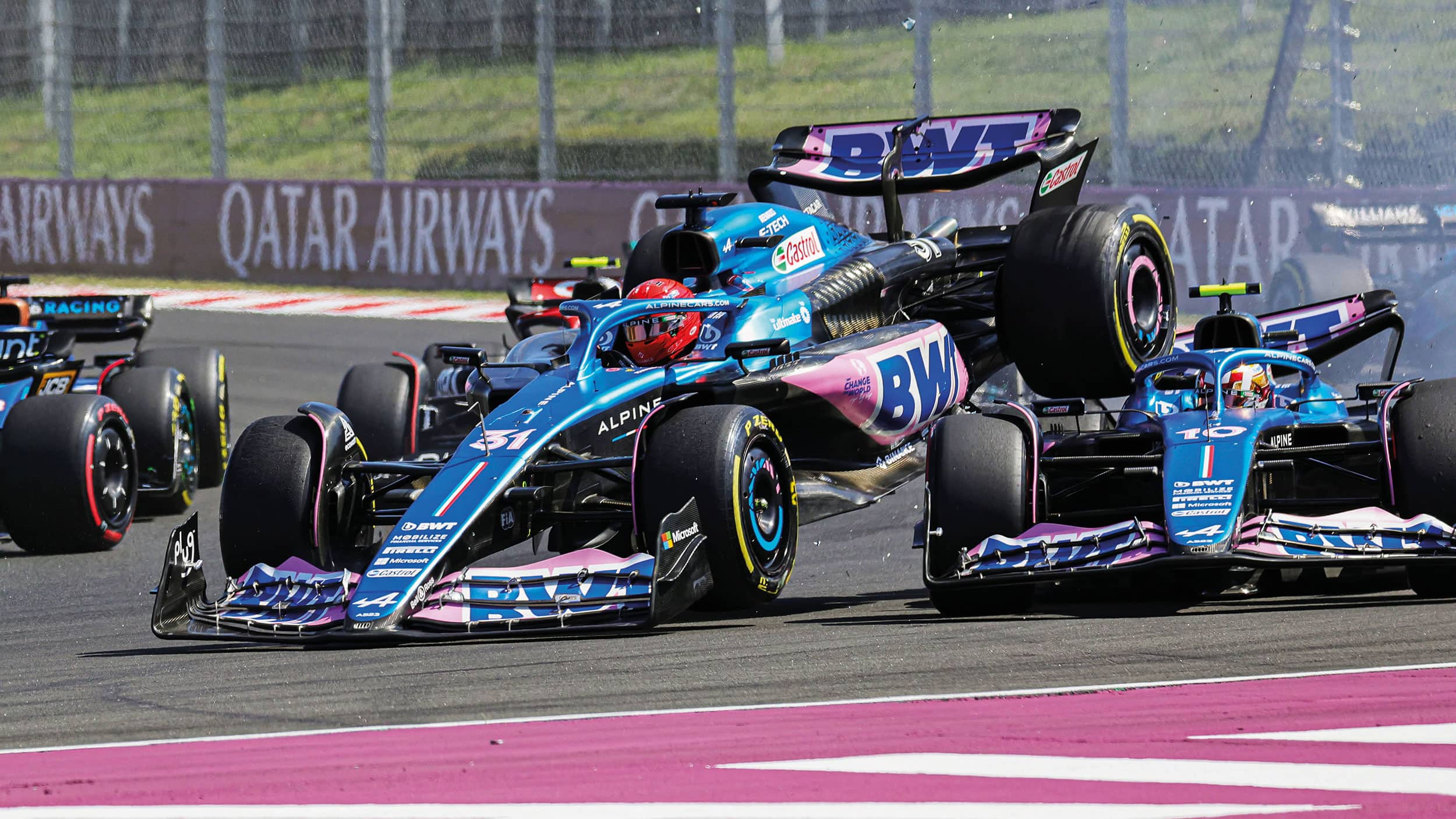
A shunt at the Hungarian GP… both retired
Getty Images
The trend in ’23 was in Gasly’s favour. For the first half of the season it was relatively even, with Ocon seeming to have the edge. After the mid-season break, Gasly got on top more frequently – something Ocon puts down to his own bad luck. But it’s still close.
Ocon’s deal with Alpine covers to the end of ’24, meaning he’s a candidate to move in what could be a major driver market reshuffle for ’25. But given the available options will likely be sideways moves at best, he will ideally want to reassert himself.
The feeling is that Alpine would be wise to pick one or the other for the long-term. Whoever is on top in ’24 is likely to be that driver: it’s trending positively for Gasly.
Valtteri Bottas vs Zhou Guanyu
Sauber-run Alfa Romeo becomes Audi in 2026, making the battle between veteran Valtteri Bottas and Zhou Guanyu high stakes. Neither’s future is assured beyond 2024 and Sauber would rather upgrade both, but might not have the pulling power it needs to do so even with manufacturer backing. Overtures are being made to bigger names, with Sainz and Ocon on the radar, but the current drivers sense opportunity.
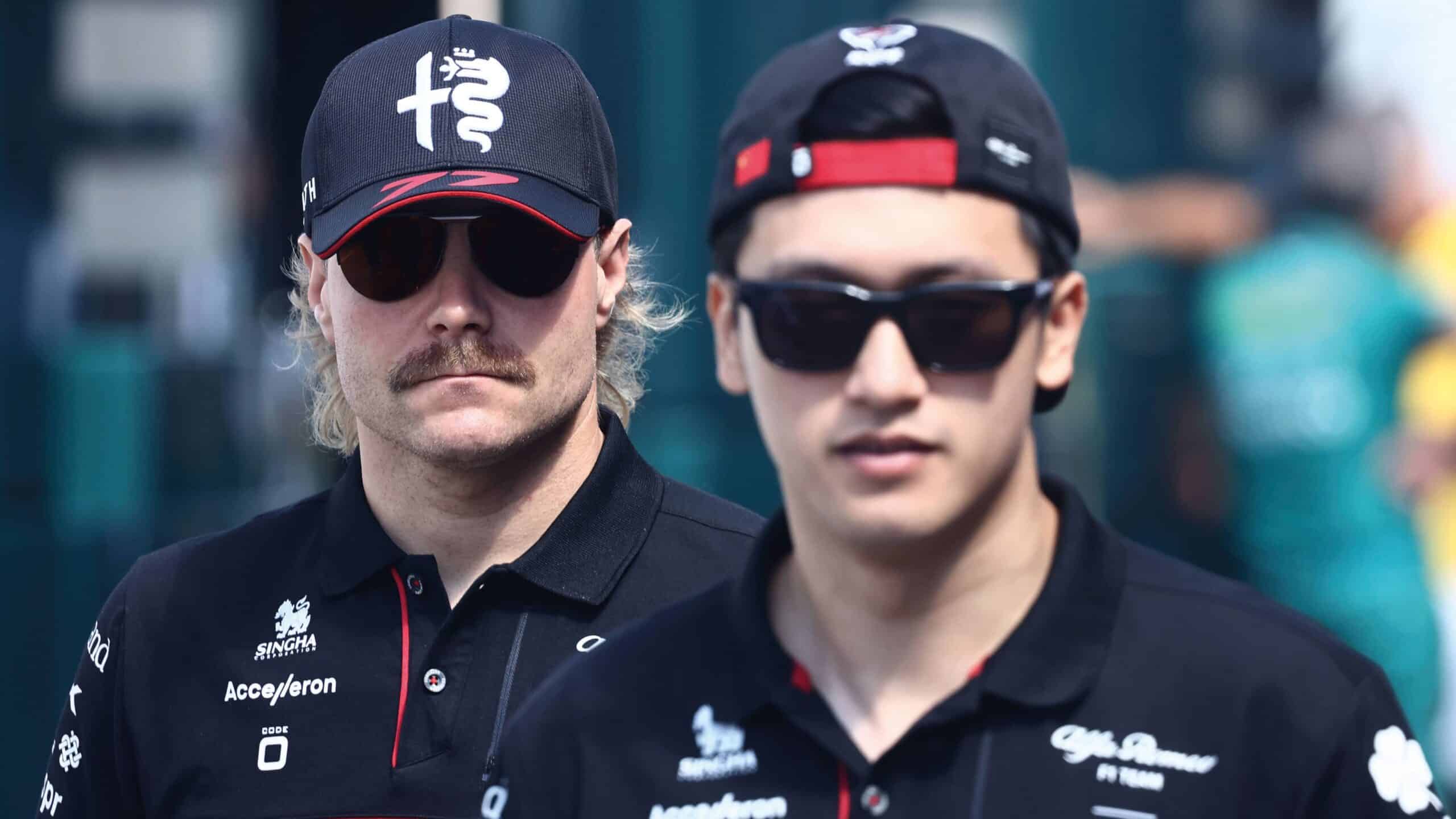
The Sauber drivers have much to do if they want to keep their seats for Audi’s arrival.
Getty Images
Bottas is the faster, as you’d expect from a driver who out-qualified Hamilton a third of the time in their five years as Mercedes team-mates. But at Alfa Romeo, his class has shone through stutteringly. Disentangling his performances from the team’s erraticness is not easy. But he has been inconsistent and the team has concerns he’s sometimes distracted by his off-track commitments. Yet at his best he has produced some superb performances.
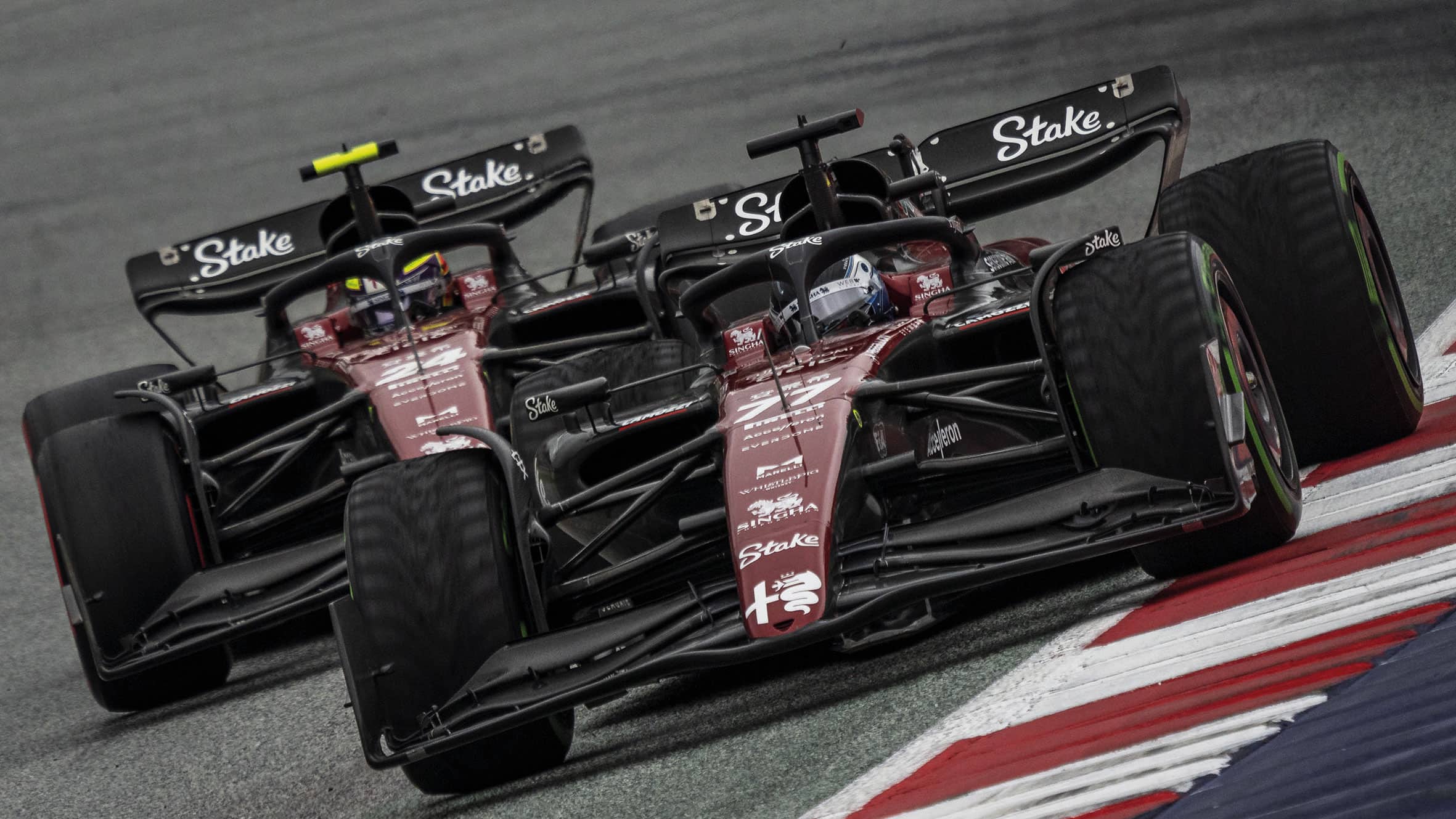
Points have been few in 2023
Zhou is a different case. He is key to the Chinese market, although Sauber finds that’s more beneficial for European and American companies becoming partners as they aim to crack the world’s second-most populous country. But he’s also an accomplished operator, hailed by race engineer Jörn Becker as “very intelligent” with “good emotional intelligence”.
Diligent, focused and relatively consistent, Zhou ticks a lot of boxes. But he’s not stunningly quick. His qualifying pace did improve a little in 2023, but that remains the fundamental doubt about the Chinese driver’s overall potential.
To secure a longer-term future with the team, he needs to add an extra sliver of pace without undermining his reputation as a safe pair of hands.
